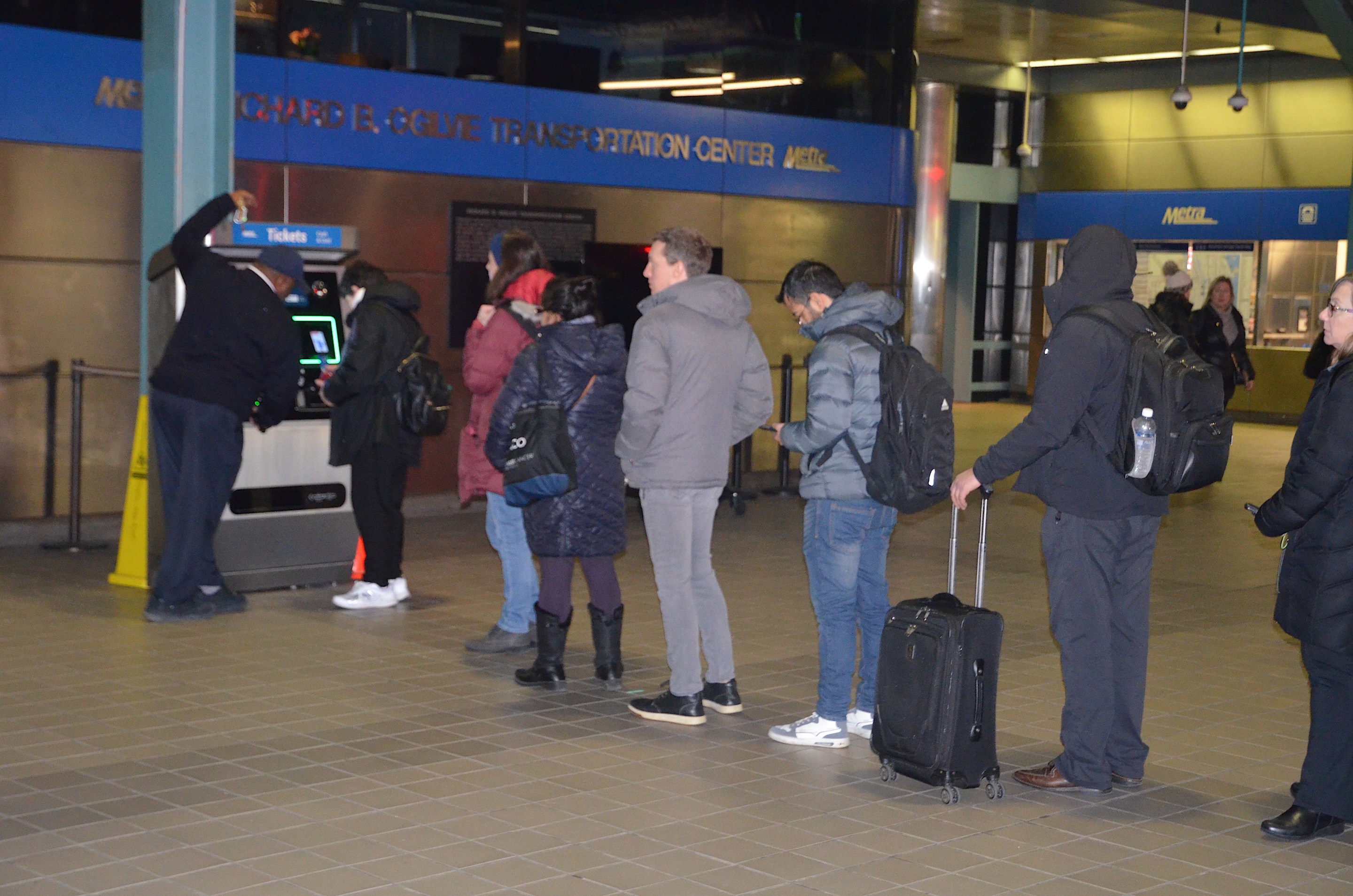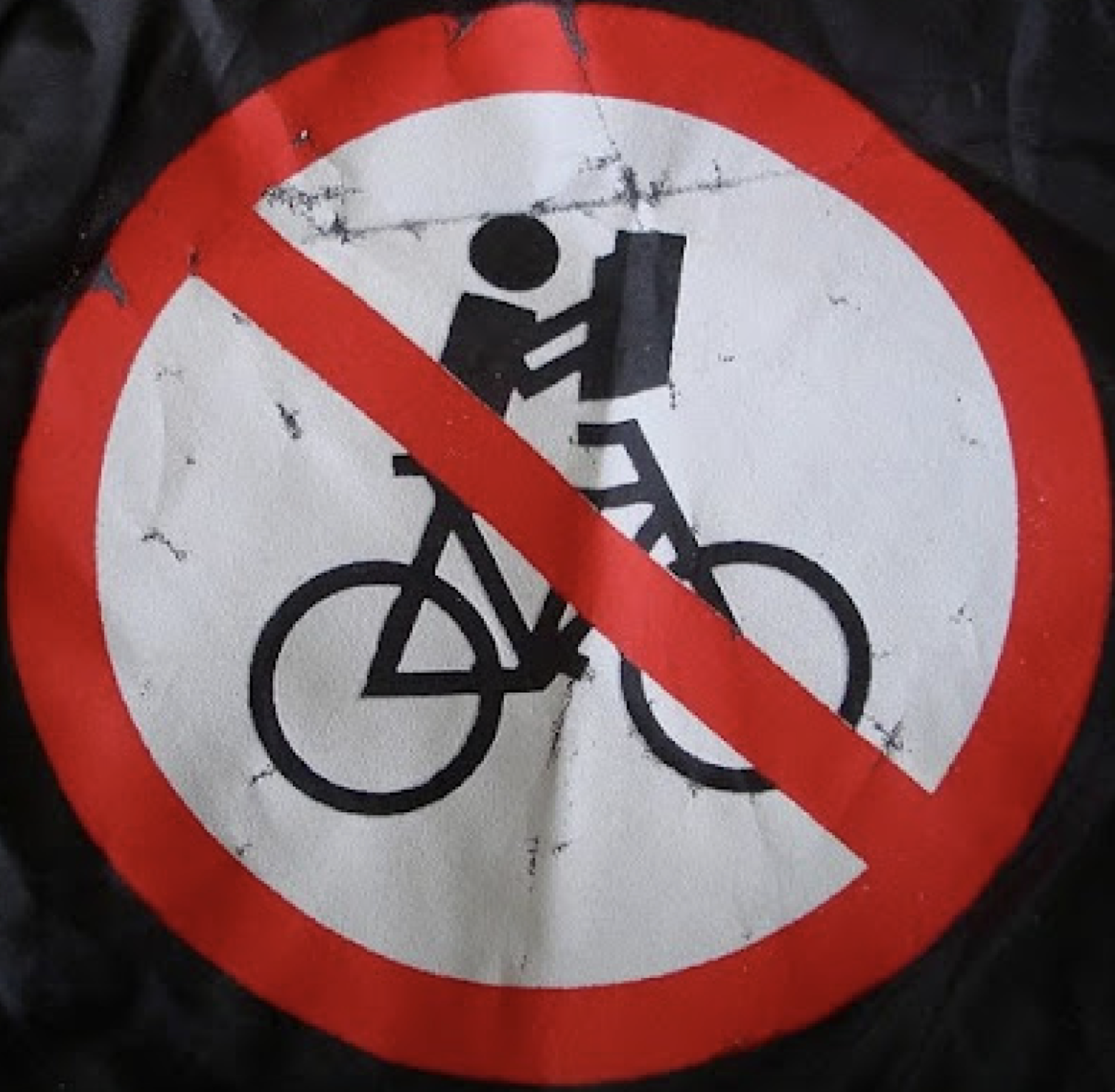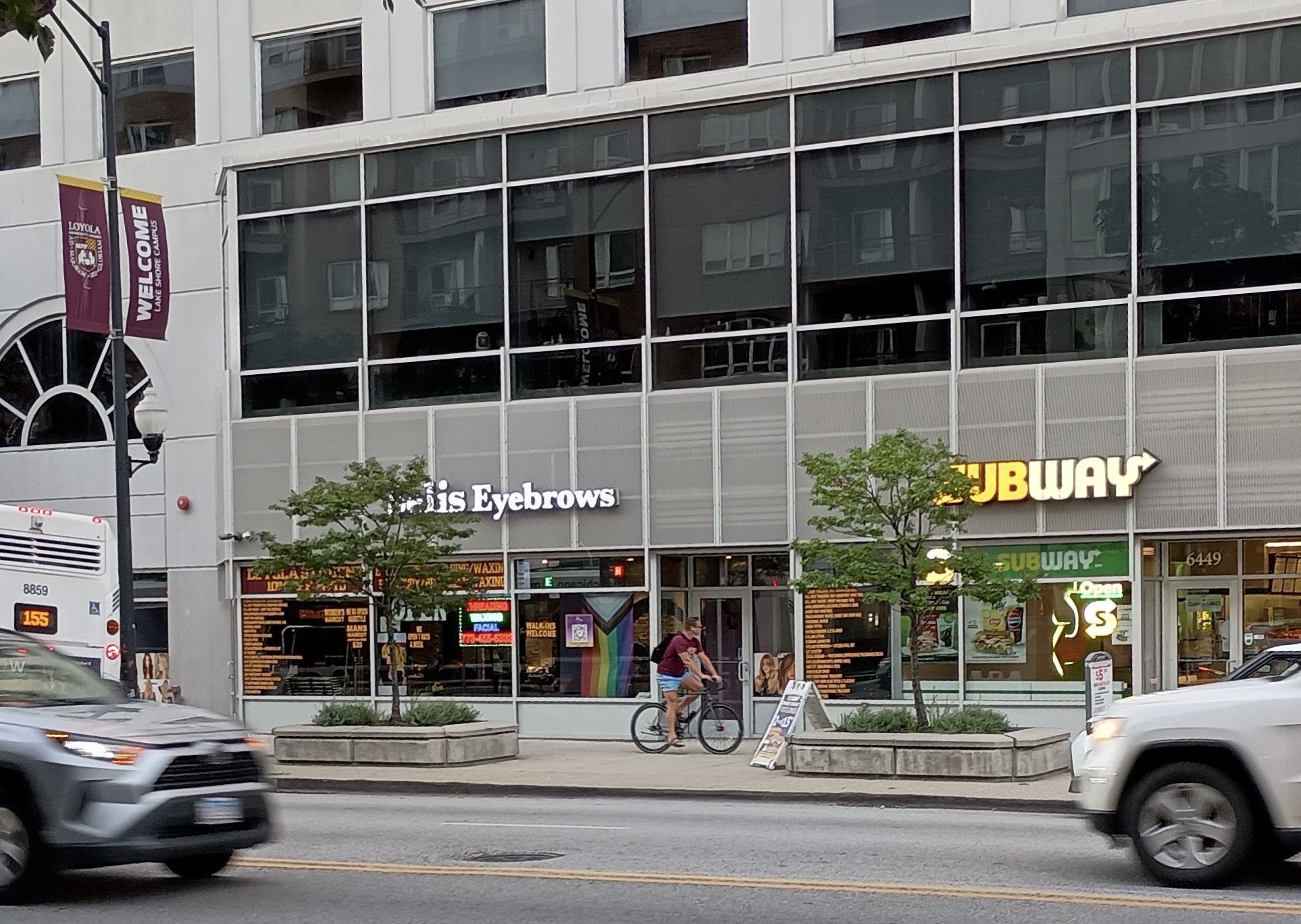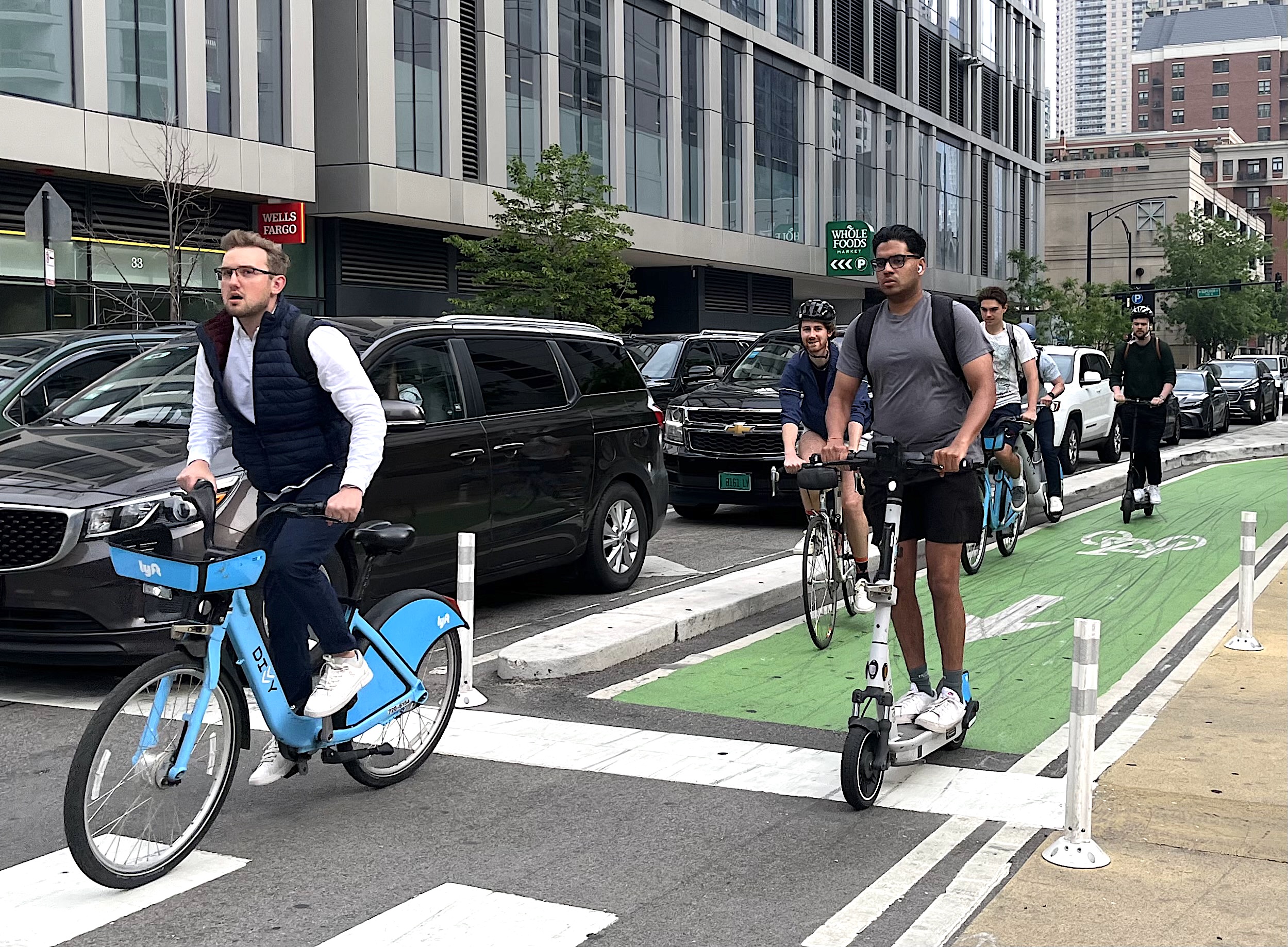
As rush hour crowds hurried to catch the trains at the Ogilvie Transportation Center concourse on late Thursday afternoon, two long lines slowly extended in the opposite direction.
The situation wasn’t quite as bad at the other three downtown terminals – Chicago Union Station, LaSalle Station and Millennium Station – but it was still not the most auspicious way to kick off the first day of Metra’s new fare system. As the new fares kicked in, the commuter railroad shut down all of the remaining ticket windows, so that the passengers trying to buy physical tickets now have to use ticket machines.
The new fare structure replaced 10 letter fare zones with four numbered ones. In a major change, your trip doesn’t involve one of the downtown terminals, the fares don’t go up based on distance. Metra also got rid of 10-ride tickets and all system-wide passes except weekend passes.
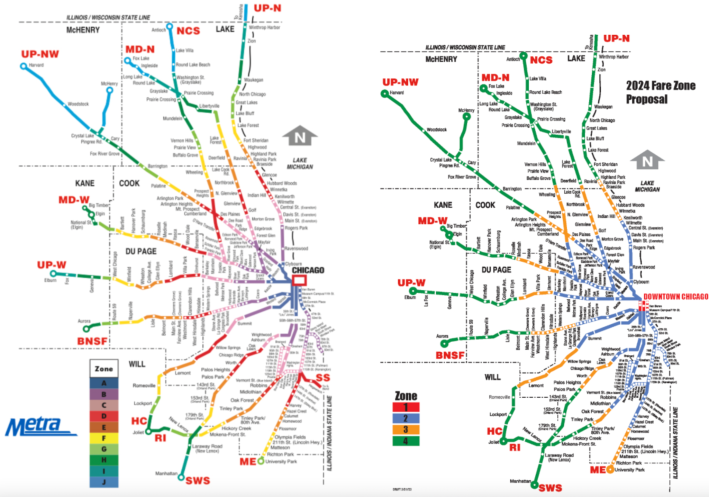
The Fair Transit South Cook pilot has been discontinued, which resulted in fare increases for the Metra Electric District and Rock Island District lines – though the new fares are still lower than what they had been pre-pilot. Metra, RTA and Cook County launched an Access Pilot Program that allows low-income riders system-wide to qualify for reduced fares. And in a small, but notable change, Metra is now permanently allowing bikes on all trains.
From what I've seen, riders were starting to take advantage of the policy. Yesterday afternoon I saw two people with bikes disembark at Oak Park from the inbound Union Pacific West Line train at 4:26 p.m.
Metra announced that it was closing the ticket windows at the beginning of this year, more than a month after the new fare system was approved and a few weeks after Metra signed off on the Access Pilot Program. Metra spokesperson Michael Gillis told Streetsblog at the time that the railroad needed to replace the aging credit card readers, and the ticket machines would work better for customers since they can operate around the clock. The announcement came as the sales of physical tickets dropped sharply since the start of the pandemic, to the point that sales through the Ventra app account for more than 80 percent of all ticket sales.
Gillis indicated that Metra wouldn’t lay off any employees as part of the switch – though it should be noted that, since BNSF Line is operated by BNSF Railway under contract with Metra, the ticket agents working on that line weren’t Metra employees. He said that ticket agents would be there to help customers use the machines and provide other assistance.
When I checked out the downtown terminals late thursday afternoon, the Ogilvie Transportation Center, the terminal for the three Union Pacific lines, had two ticket machines at the boarding area, roughly to Tracks 7 and 8. There was also one at the underground concourse between Washington and Randolph streets. Millennium Station, which serves MED and South Shore Line trains had two ticket machines near the passenger waiting area across from the closed ticket windows. LaSalle Station, the RID’s terminal, had two ticket machines at the main concourse – but notably, neither of them were inside the enclosed waiting area. Chicago Union Station, the terminal for all the other lines, had four machines at the ticket area.
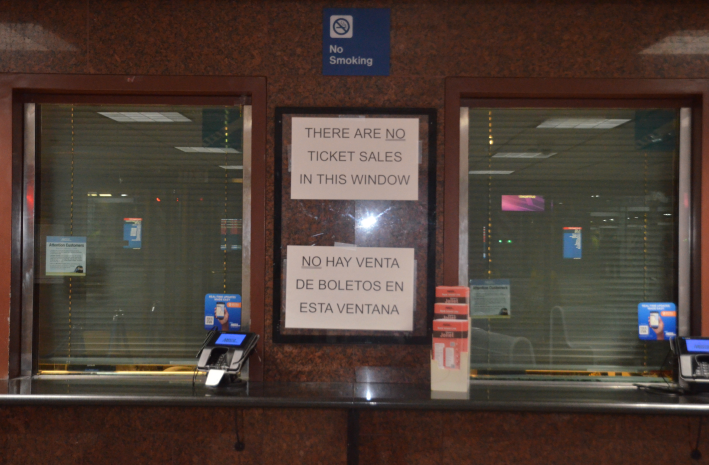
At the time I visited the stations, all but Millennium Station had one ticket window open, but only for customer service. There were at least two Metra employees hanging around the ticket machines and helping customers at any given time.
The lines I saw at Millennium, LaSalle and Union stations were relatively short and seldom exceeded eight people. Ogilvie was a different story.
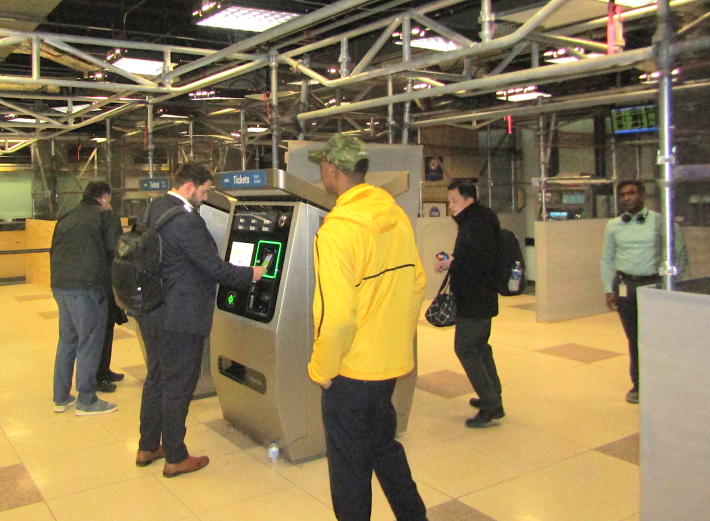
I was hanging out by the terminal’s main ticket offices, trying to get good shots of the windows, when several customers approached the one open window. “Can I get a one-way…” a man in his 30s started to say, but the Metra employees cut him off.
“We don’t sell tickets anymore," she said. “You’re going to need to use the app or the vending machine. The vending machines are between tracks 7 and 8.”
“You mean where there’s a line around the block,” an older man behind the young man grumbled.
I went over to the concourse and, sure enough, the two lines went almost as far as the platforms, sometimes all the way onto the platforms. The Metra employees tried to help customers, but the lines moved slowly and didn’t seem to shrink.
One of the riders, who declined to give her name, said she was caught completely off-guard by the ticket windows closing. She was worried that the lines would either force passengers to miss their trains or pay the $5 surcharge for buying their tickets from a conductor onboard.
Gillis previously said the surcharge wiould be waived to help riders adjust to the new fares, but he didn’t have a firm deadline for how long.
The riders who spoke to me on the record seemed fairly comfortable with the changes.
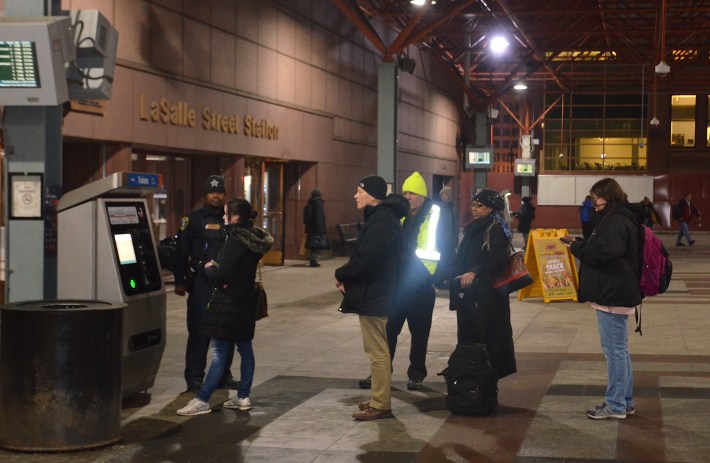
Joseph Jaye, who was waiting for the RID train at LaSalle station, said he thinks the new fare structure is “a better deal.” He's originally from Denver, where the local transit agency, the Regional Transportation District, slashed fares across the board at the start of this year. Jaye added that Metra's 10-zone fares, with a multitude of passes and tickets and the Fare County South Cook pilot, was “a little chaotic... [The new fare system is] a little better, it’s cheaper."
Alyssa Younger, who regularly rides the MED and uses the Ventra app, said she didn’t mind the fare increase. “We had reduced fares for, what, four years?” she said. “I’m not mad. It’s fine.” The pilot launched in January 2021.
While Metra's new fare system and ticket machines have some predictable learning curves and glitches, hopefully more customers will get accustomed to to using them and more comfortable with it in the near future.

Did you appreciate this post? Please consider making a tax-deductible donation to help Streetsblog Chicago keep publishing through 2025. Thank you.
